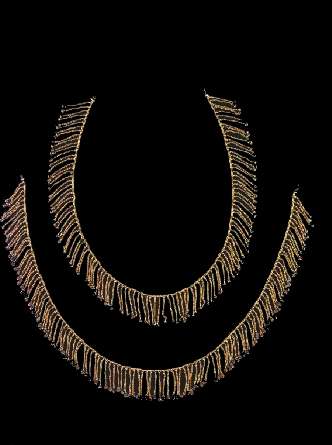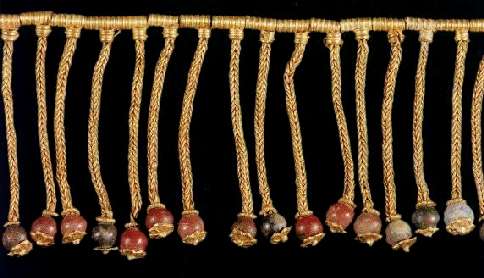
|
Gold and Glass
Length 41.4 and 40.1 cm.
weight 38.29 and 34.07 qr.
Usak Museum
The two necklaces have been reconstructed from a total of 236 pendant chains that terminate in small glass beads of reddish brown (or opaque red) and dark blue. One necklace has 120 chains, with twenty-nine of the beads missing and several broken, the other has 116 chains, with none of the beads intact. Each multiple loop-in-loop chain is suspended from a short cylindrical bead formed from gold sheet and ringed with five or six fine ribs. Near one end of each bead is attached metallurgically a short ribbed collar, inside which is inserted the chain. The chain is secured by a short length of wire which passes through two tiny perforations in the collar, the ends bent over against its outer face. A short length of wire hooked through the bottom of the chain pierces the glass bead, which is held between a ring of beaded wire at the top and a six-petal rosette with projecting centre at the tip.
|
Chains composed of ribbed cylinders have been discovered at different sites (including Sardis), of varying dates. Analogous beads, of gold and camelian, also with rosette terminals, are in the Boston Museum of Fine Arts (1982-413); here the beads are attached directly to rectangular gold tubes, with no intervening chains. Similar pendant chains with bead terminals appear on Hellenistic diadems. An interesting use of chain pendants occurs on an alabastron found in the early 6th century BC tomb of King Aspelta at Nuri in the Sudan.
|

|













